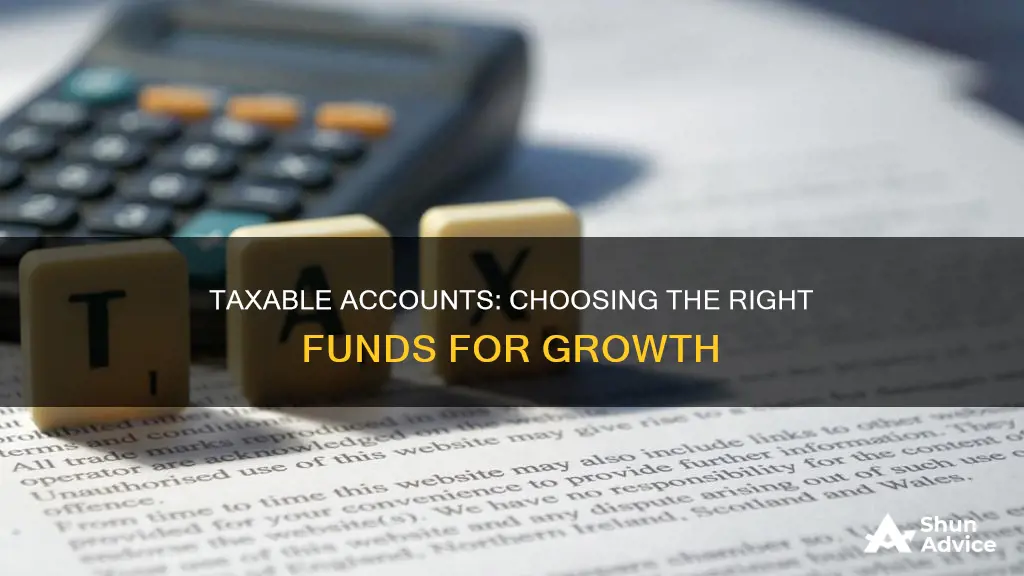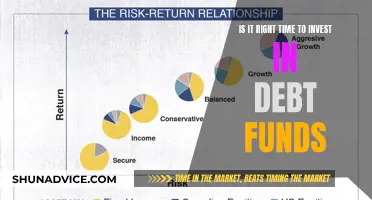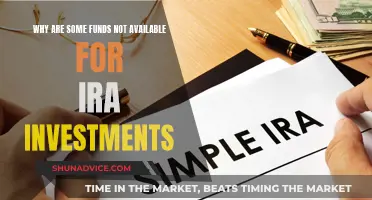
While tax-advantaged accounts like IRAs and 401(k)s are a great way to save for retirement, they have annual contribution limits. This makes it impractical for every investor to rely solely on these accounts. Taxable accounts, such as brokerage accounts, offer more flexibility and can be used to save for shorter-term goals. However, investors should be mindful of their growing tax liability when investing in taxable accounts.
Taxable accounts are taxed according to how long the asset was held before being sold. Investments held for longer than a year are subject to long-term capital gains rates of 0%, 15%, or 20%, depending on the investor's tax bracket. Investments held for a year or less are taxed according to the individual's ordinary income tax bracket.
To reduce their tax liability, investors should consider choosing investments that limit short-term capital gains, ordinary dividends, current income, and interest. These include stocks held for more than a year, municipal bonds, and tax-managed funds.
Additionally, investors can benefit from using tax-advantaged accounts like Roth IRAs, HSAs, and 529 college savings plans, which allow tax-free earnings and withdrawals under certain conditions.
By carefully selecting investments for taxable accounts and utilizing tax-advantaged accounts, investors can maximize their after-tax returns and keep more of their investment earnings.
What You'll Learn

Municipal bonds and money market funds
Municipal bonds are issued by state or local governments to fund their operations or finance capital expenditures for public projects. The interest paid on these bonds is usually exempt from federal income taxes and may also be exempt from state and local taxes for investors living in the same state or municipality where the bond was issued. Municipal bonds are attractive to investors seeking to lower their taxable income. They are also known as "munis".
Money market funds, on the other hand, are a type of mutual fund that invests in short-term, low-risk debt. They are considered to be among the safest short-term investments because they are highly liquid and insulated from market volatility. Money market funds are fixed-income mutual funds that invest in high-quality debt securities, usually government bonds or highly-rated corporate debt. These funds rarely lose value and offer reliable interest payments, although these tend to be very low.
Municipal bonds are subject to interest-rate risk and credit risk. Money market funds are also subject to interest-rate risk, as well as inflation risk, liquidity risk, and credit and default risks.
Social Security's Uninvested Funds: Why and What If?
You may want to see also

I bonds and Series EE bonds
Series EE bonds are currently only available in electronic form and can be purchased and managed through a TreasuryDirect account. These bonds have a maturity period of 30 years and earn interest monthly, with interest rates compounded semi-annually. The interest rate for EE bonds is fixed and set at the time of purchase, guaranteed to double the value of the bond in 20 years. EE bonds can be cashed in after 12 months, but cashing in before 5 years will result in a loss of the last 3 months' worth of interest.
I bonds also earn interest monthly and have a maturity period of 30 years. The interest rate for I bonds is a combination of a fixed rate and an inflation rate that is adjusted every 6 months. The current fixed rate for I bonds is 1.20%. Like EE bonds, I bonds can be cashed in after 1 year, but cashing in before 5 years will result in a loss of the last 3 months' worth of interest.
Both I bonds and Series EE bonds are subject to federal income tax but are exempt from state and local income taxes. If the proceeds from redeeming the bonds are used for qualified higher education expenses, investors may be exempt from paying federal income tax on the earnings.
In terms of purchasing limits, individuals can buy up to $10,000 worth of electronic EE or I bonds and $5,000 worth of paper I bonds (available until January 1, 2025) in a calendar year.
Pension Funds: A Secure Investment Option?
You may want to see also

Equity exchange-traded funds
ETFs have fewer "taxable events" than mutual funds, as they create and redeem shares using "in-kind transactions", which aren't considered sales and don't trigger taxable events. In contrast, mutual fund managers must constantly rebalance the fund by selling securities to accommodate shareholder redemptions, creating capital gains for shareholders.
Additionally, ETF managers accommodate investment inflows and outflows by creating or redeeming "creation units", baskets of assets that approximate the ETF's investment exposure. As a result, investors are usually not exposed to capital gains on any individual security in the underlying structure.
ETFs are particularly beneficial for investors in taxable brokerage accounts, as they can help reduce annual tax bills relative to mutual funds. The tax savings are moot in retirement accounts like 401(k)s or IRAs, as these accounts are already tax-preferred.
When it comes to taxation of dividends, if an investor has held the ETF for more than 60 days before the dividend was issued, the dividend is considered a "qualified dividend" and is taxed between 0% to 20% depending on the investor's income tax rate. If the dividend was held for less than 60 days, it is taxed at the investor's ordinary income tax rate.
It's important to note that certain types of ETFs, such as international ETFs (especially emerging market ETFs) and leveraged/inverse ETFs, may be less tax-efficient due to their use of derivatives and restrictions on in-kind deliveries of securities.
Overall, equity ETFs offer investors a convenient and diversified investment option with built-in tax advantages, making them a fine choice for taxable accounts.
Smart Ways to Invest $25,000 in Mutual Funds
You may want to see also

Master limited partnerships
MLPs have two types of partners: general partners who manage the MLP and oversee its operations, and limited partners who are investors in the MLP. Limited partners receive periodic distributions from the MLP, typically every quarter. These distributions are not taxed when they are received but are considered a reduction in the cost basis of the MLP investment. If the cost basis reaches zero, distributions are taxed as capital gains in the year of distribution.
The tax treatment of MLPs is complicated, and the filing requirements are complex. MLP investors must pay state income taxes in each state in which the MLP operates, which can increase costs. Additionally, MLPs are limited to operating in the real estate and natural resources sectors due to concerns over lost corporate tax revenue.
Despite these limitations and complexities, MLPs can be a good investment option for taxable accounts. They offer tax-sheltered distributions and are considered a rare higher-income investment that is generally better off inside a taxable account than a tax-sheltered one.
Investment Spending: Exploring the Diverse Sources of Funds
You may want to see also

Individual stocks
If you hold individual stocks in a taxable account, you also don't have to pay capital gains until you sell a share and lock in a gain. This gives you more control over when you pay taxes on capital gains, which is not the case with mutual funds, where you have to pay taxes on capital gains payouts regardless of whether you've sold any shares.
Additionally, holding individual stocks makes it easier to take advantage of tax-loss selling. This is because individual stocks exhibit more frequent and dramatic ups and downs than diversified mutual funds, so it's easier to find losses in your portfolio.
If you're considering investing in individual stocks, it's important to keep in mind that you will owe taxes on dividend distributions. Therefore, it's generally recommended to keep high-income-producing equities in a tax-sheltered account.
Overall, individual stocks can be a good option for taxable accounts, especially if you plan to hold them for the long term and don't trade frequently.
CEF Funds: Where the Rich Invest Their Money
You may want to see also
Frequently asked questions
There are two main types of investment accounts: taxable accounts and tax-advantaged accounts. Taxable accounts, such as brokerage accounts, offer more flexibility but fewer tax restrictions. Tax-advantaged accounts, such as IRAs and 401(k)s, provide tax benefits but have annual contribution limits and penalties for early withdrawals.
Some funds that are well-suited for taxable accounts include municipal bonds, municipal-bond funds, money market funds, I Bonds, Series EE Bonds, equity exchange-traded funds (ETFs), and master limited partnerships.
Funds that are generally not suitable for taxable accounts include taxable bonds, actively managed equity funds, high-dividend-paying stocks, REITs, commodities futures funds, and convertible bonds.
Tax efficiency is an important consideration when choosing investments for taxable accounts. Tax-efficient investments help to minimize taxes and maximize after-tax returns. Investors should aim to hold tax-efficient investments in taxable accounts and less tax-efficient investments in tax-advantaged accounts.
To minimize taxes in taxable accounts, investors can consider the following strategies:
- Hold investments for the long term: Long-term capital gains rates are typically lower than short-term capital gains rates.
- Choose tax-friendly investments: Select investments that limit short-term capital gains, ordinary dividends, and taxable interest income.
- Utilize tax-advantaged accounts: Take advantage of accounts like Roth IRAs, HSAs, and 529 plans that offer tax-free growth and withdrawals under certain conditions.







